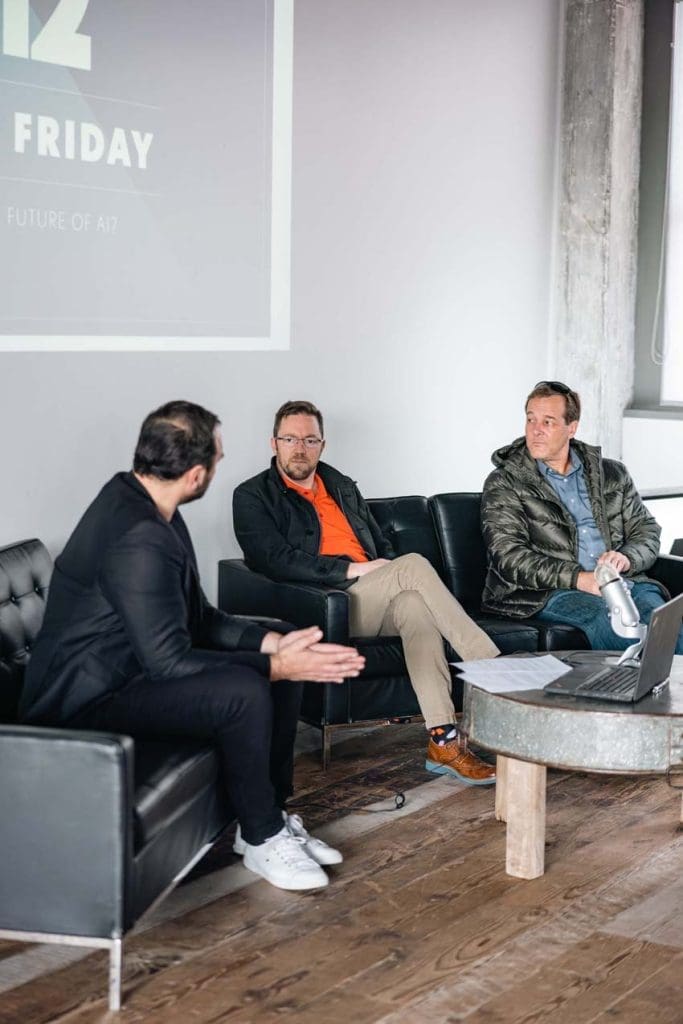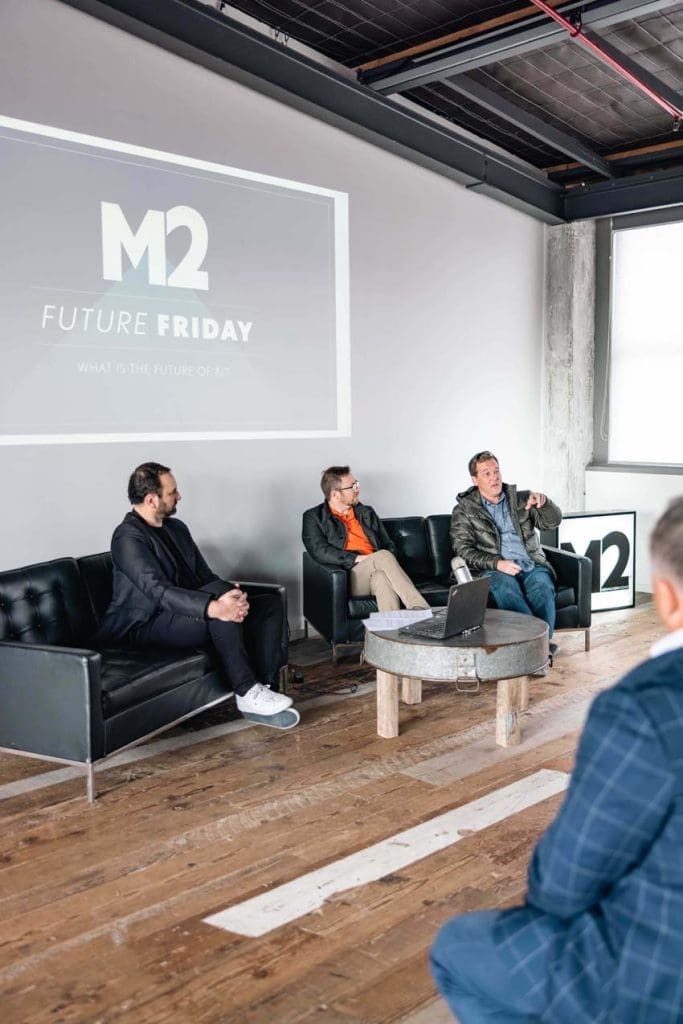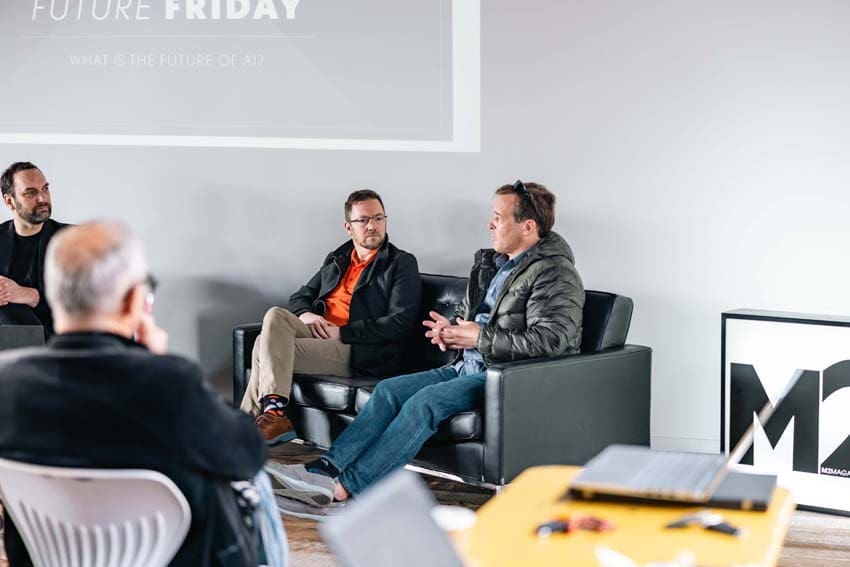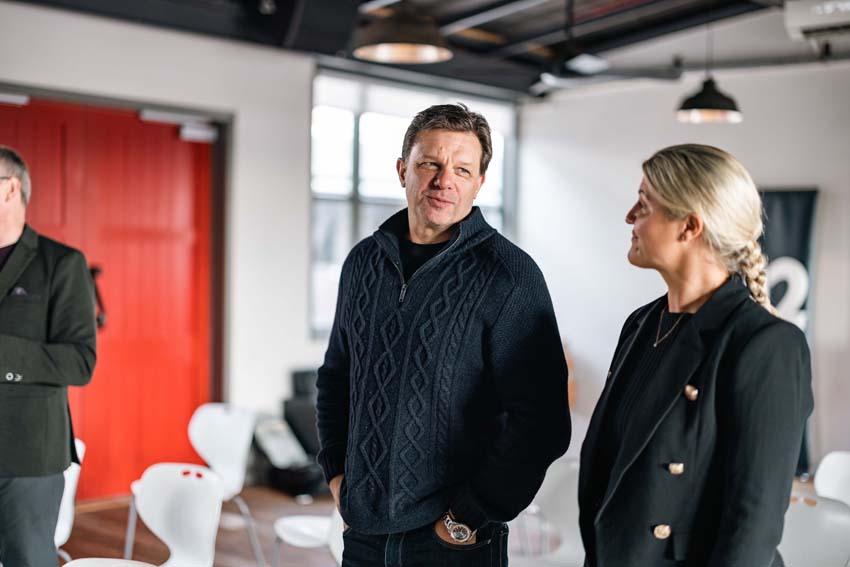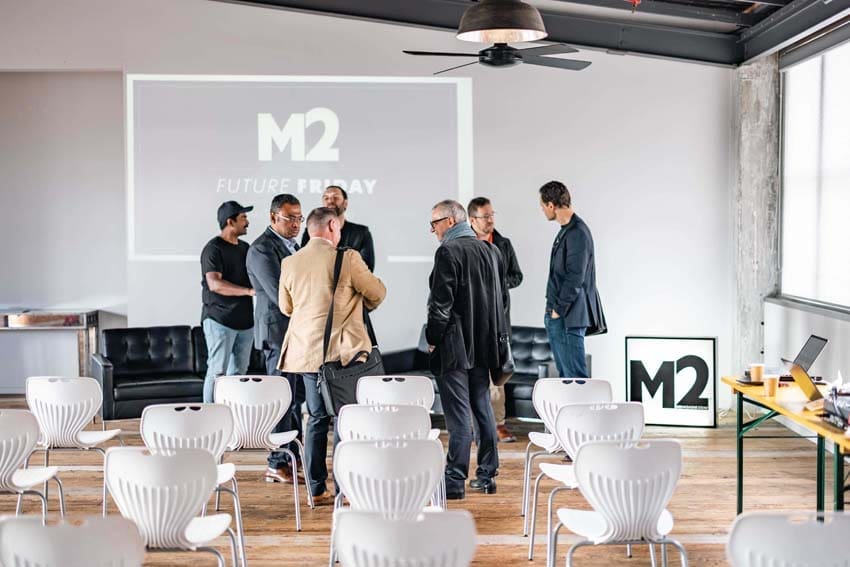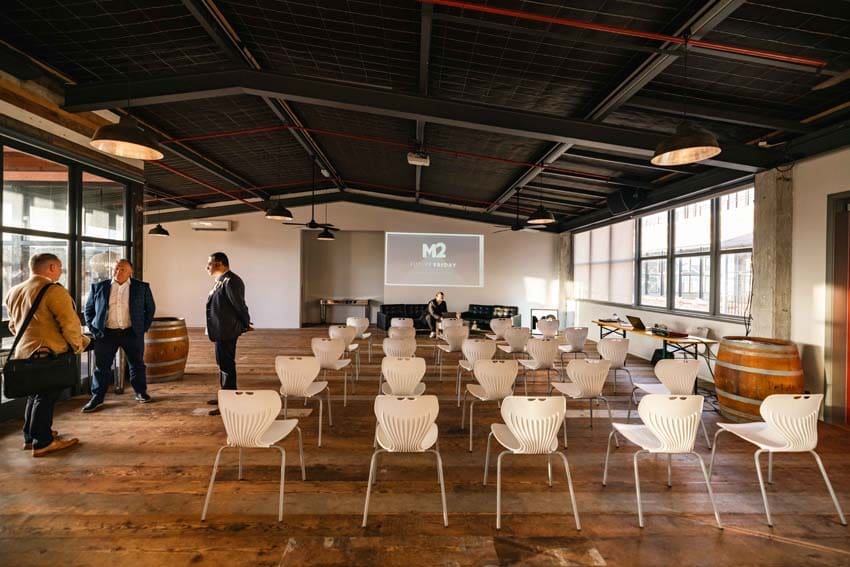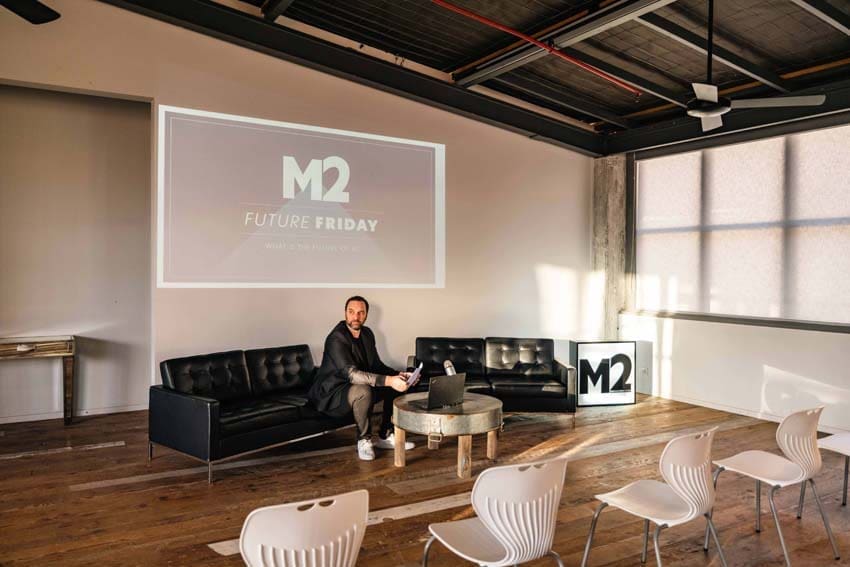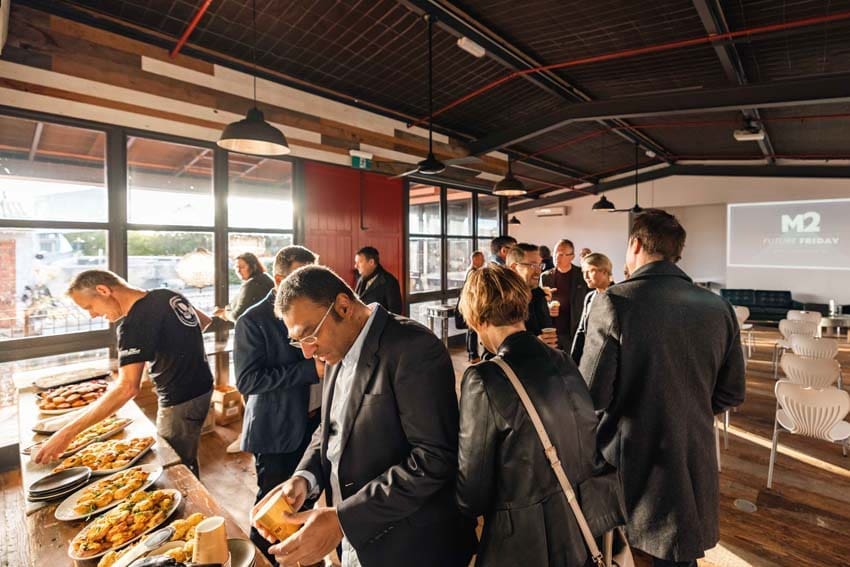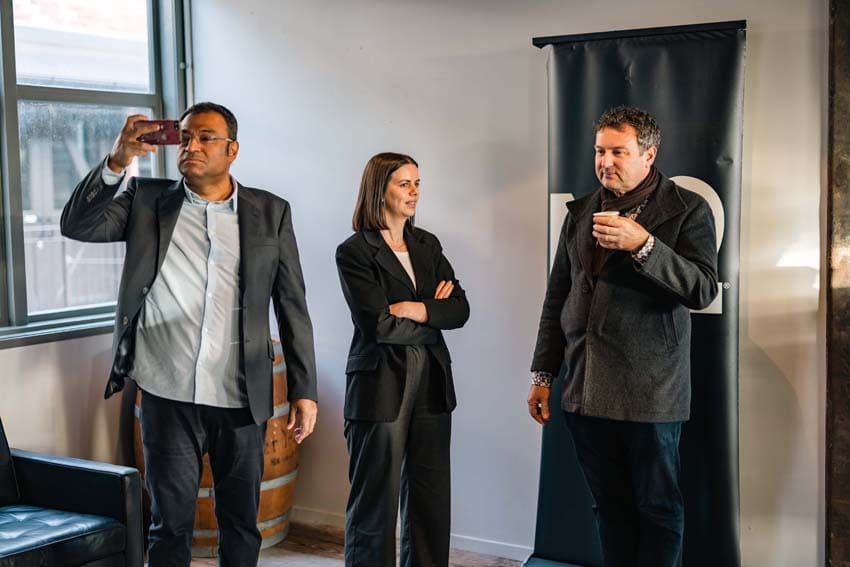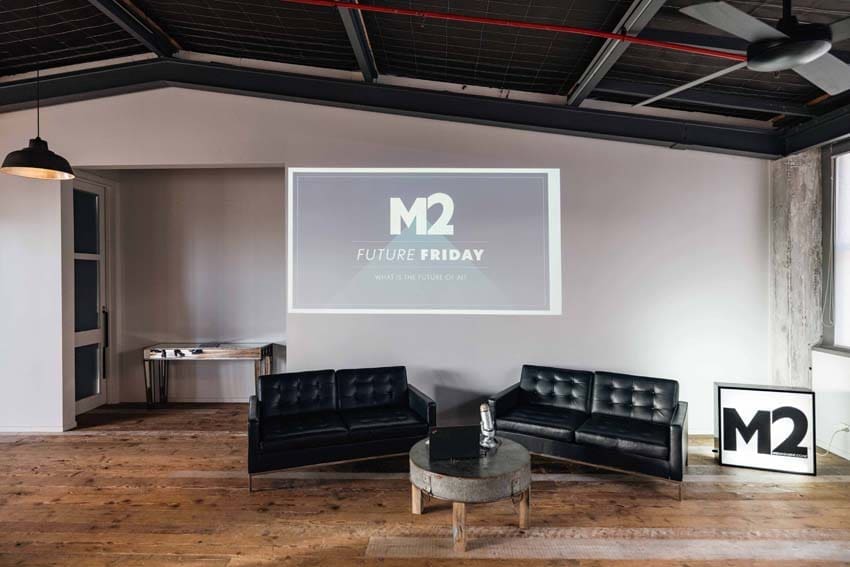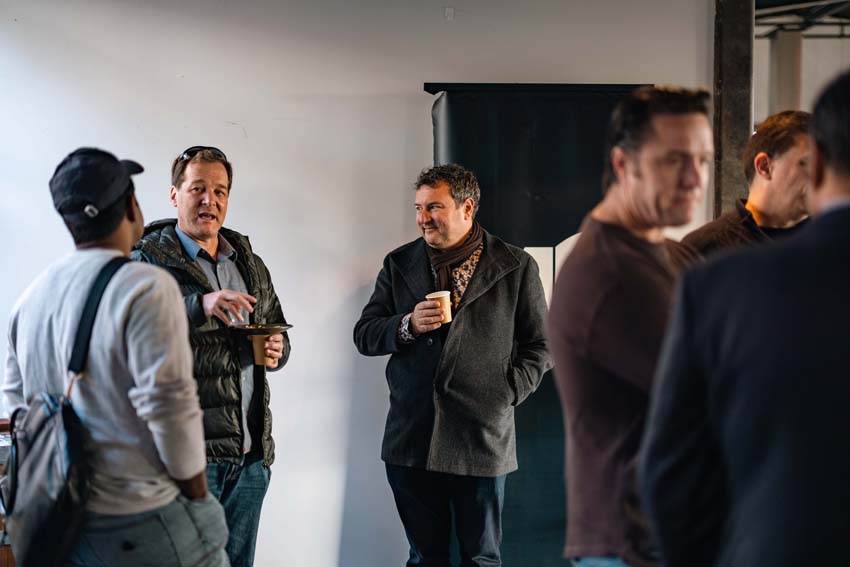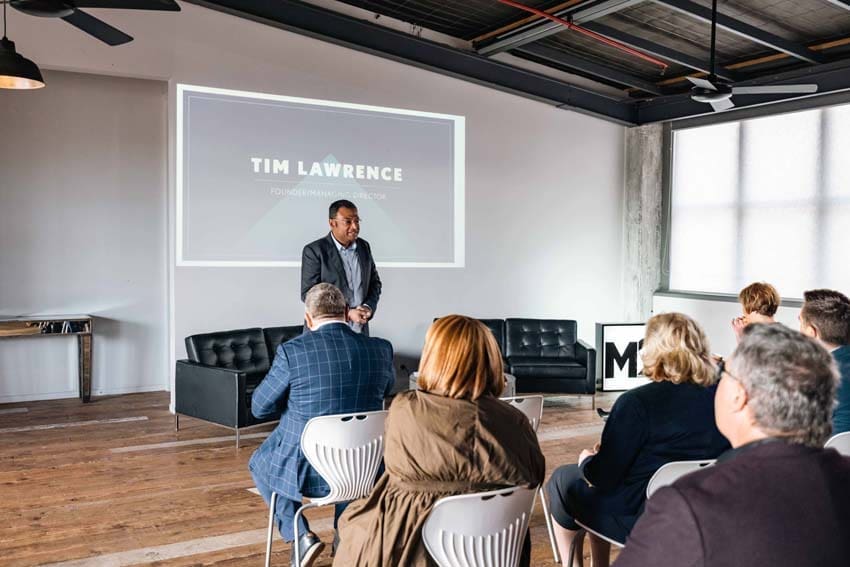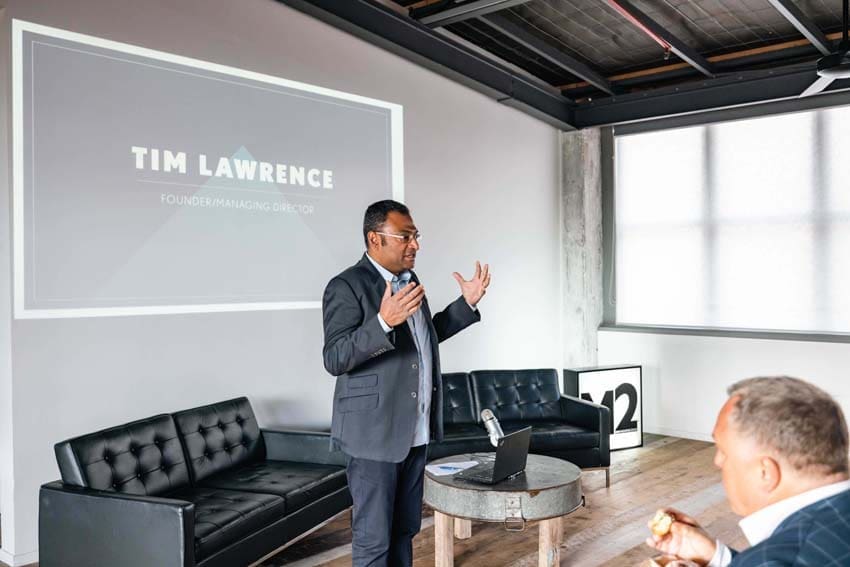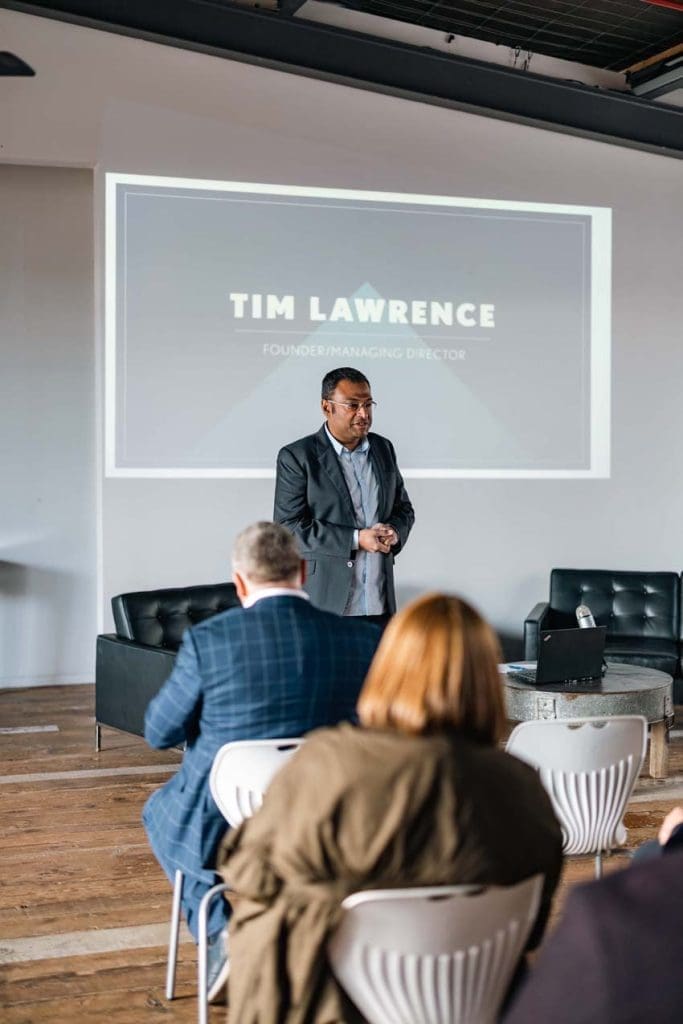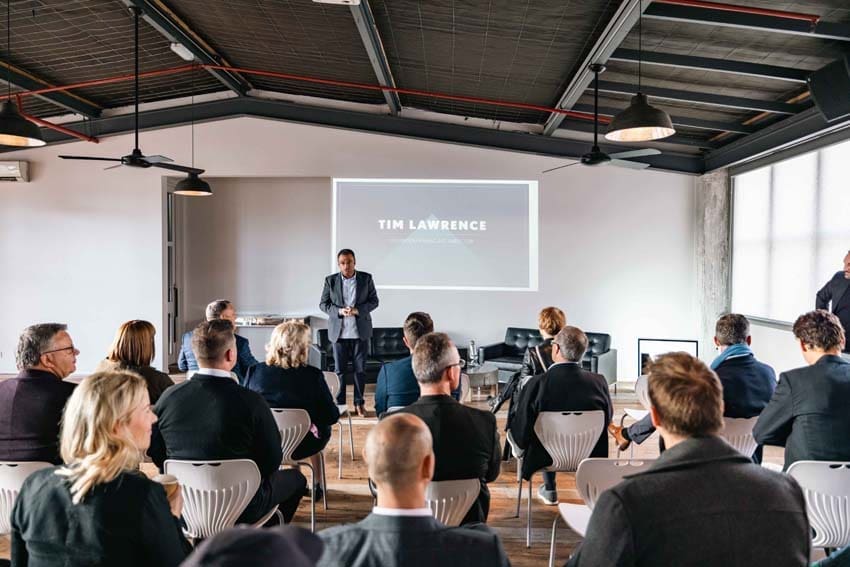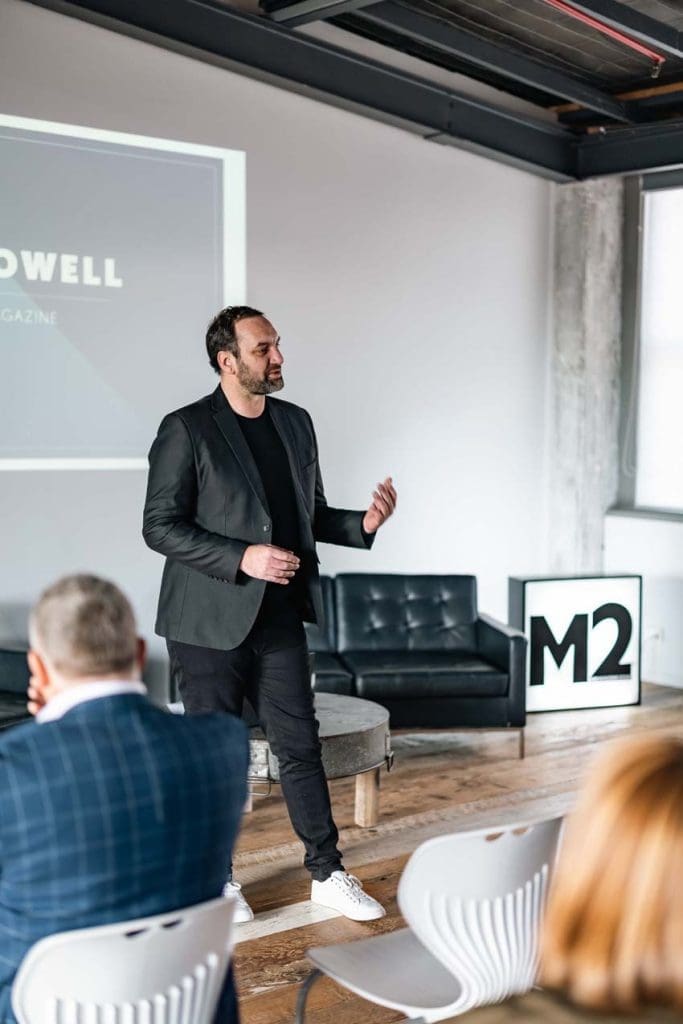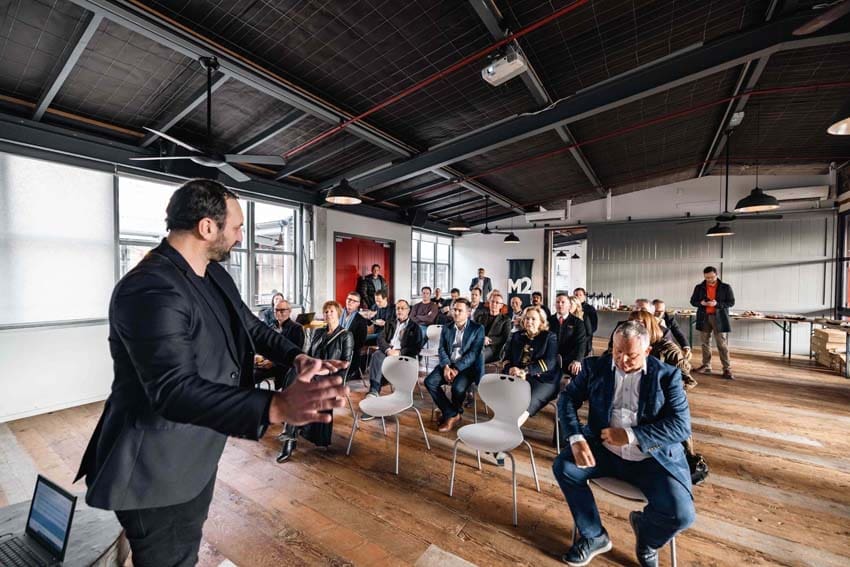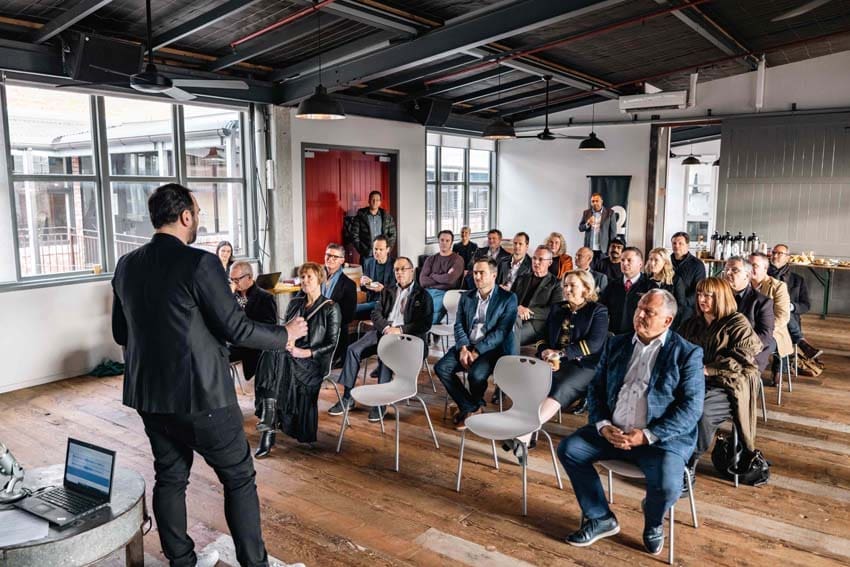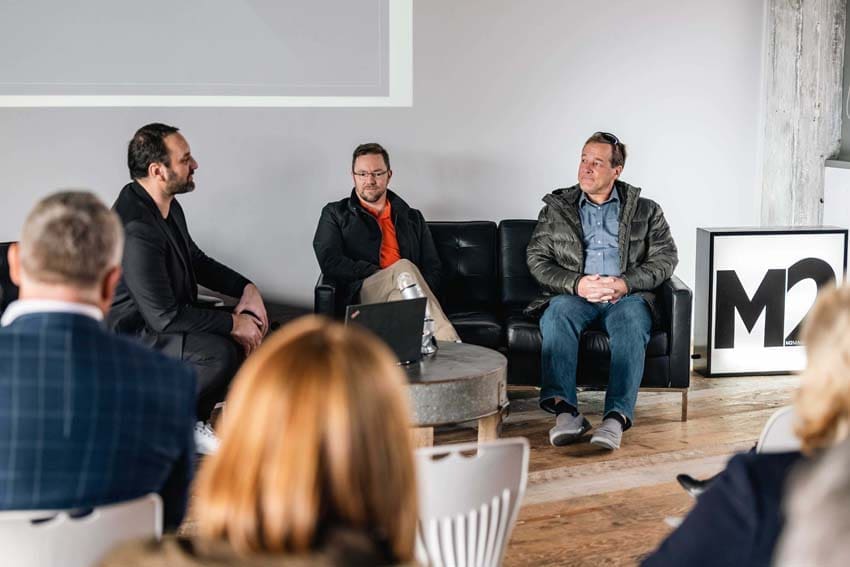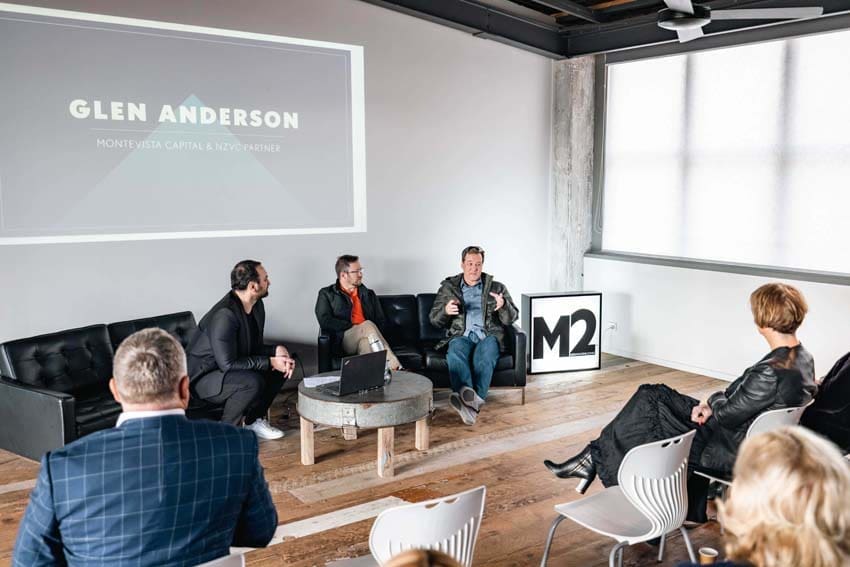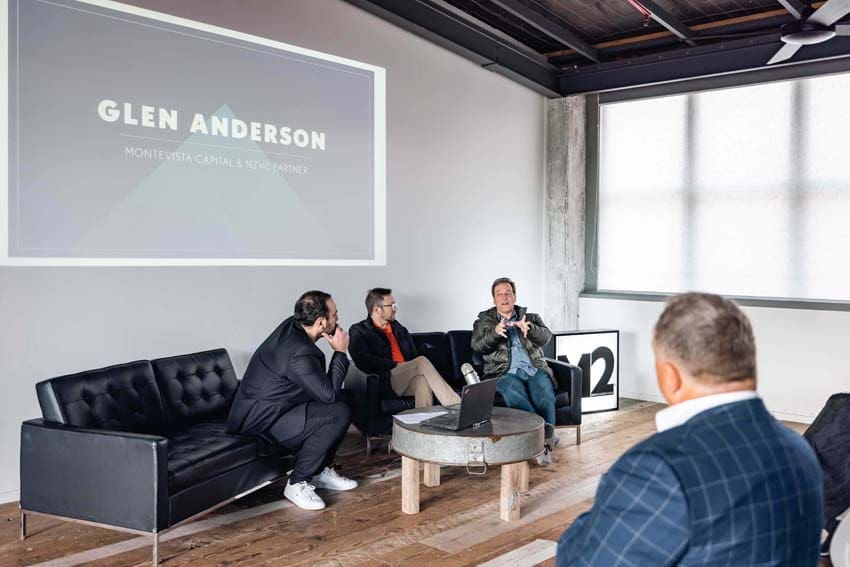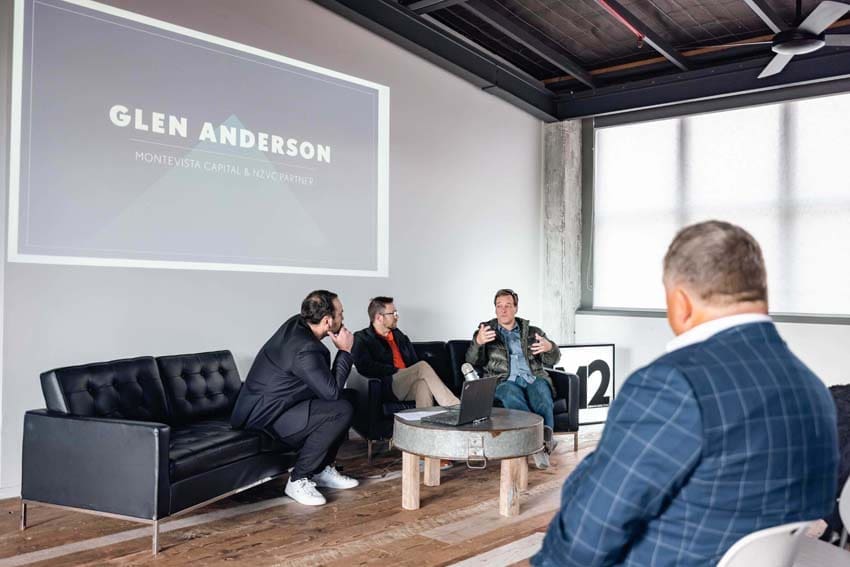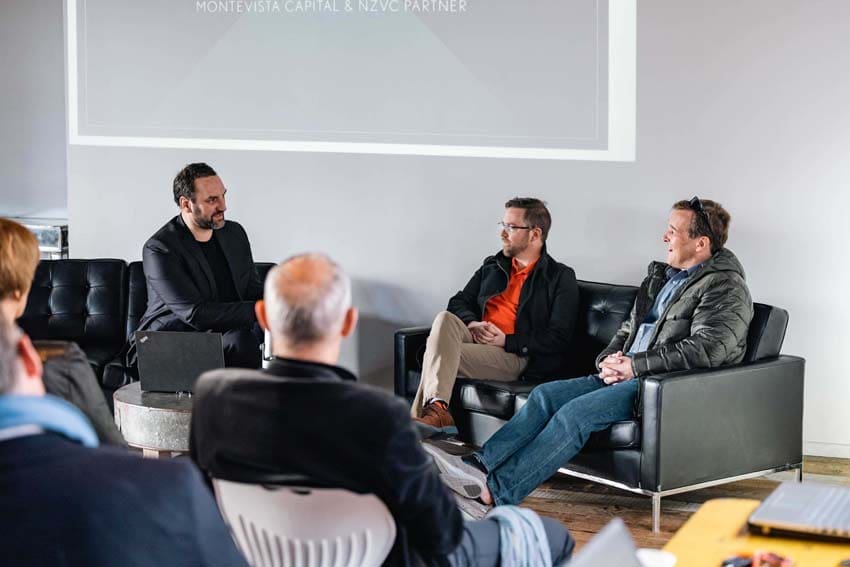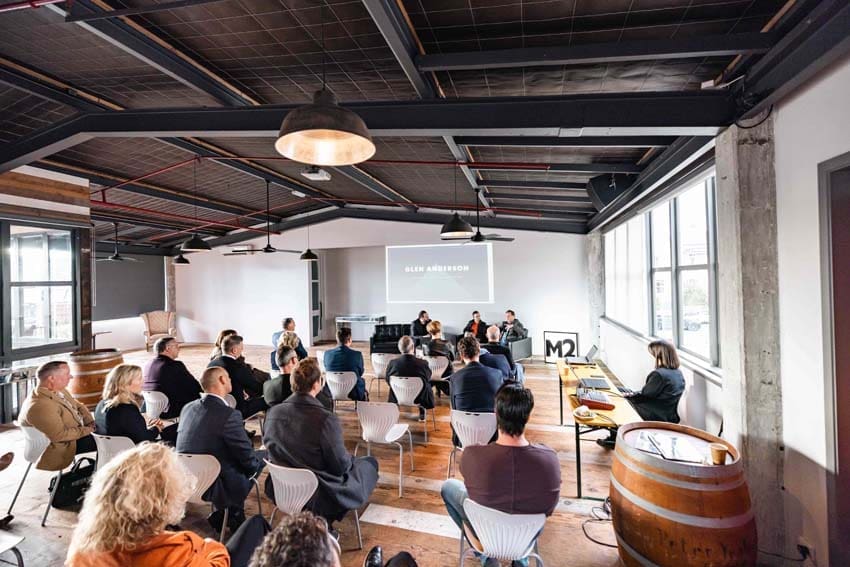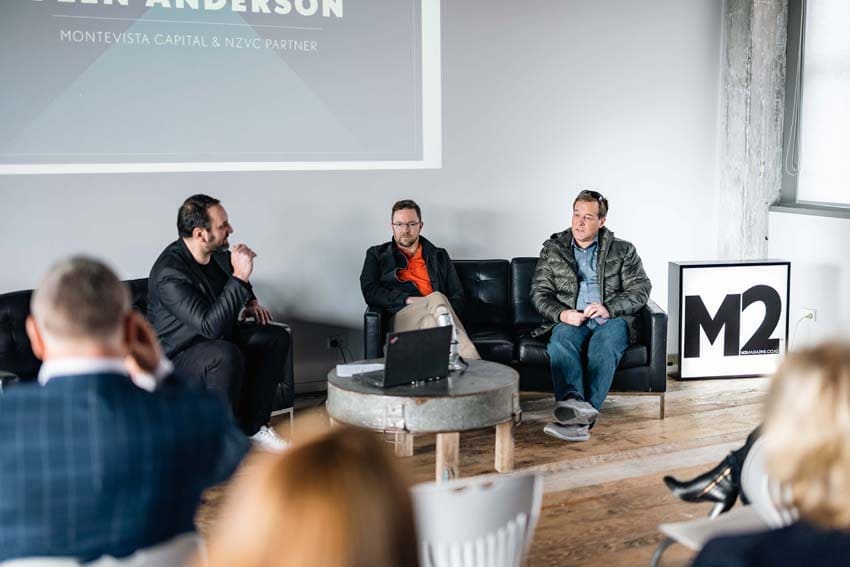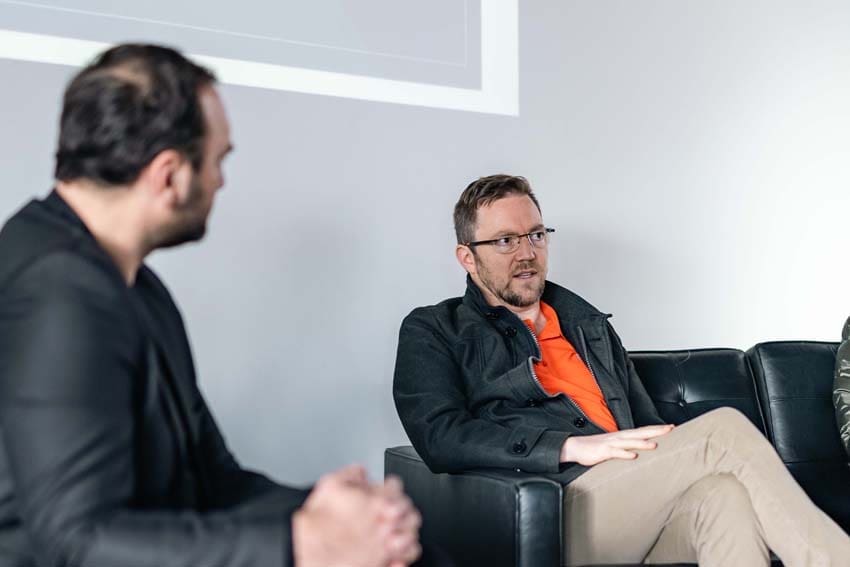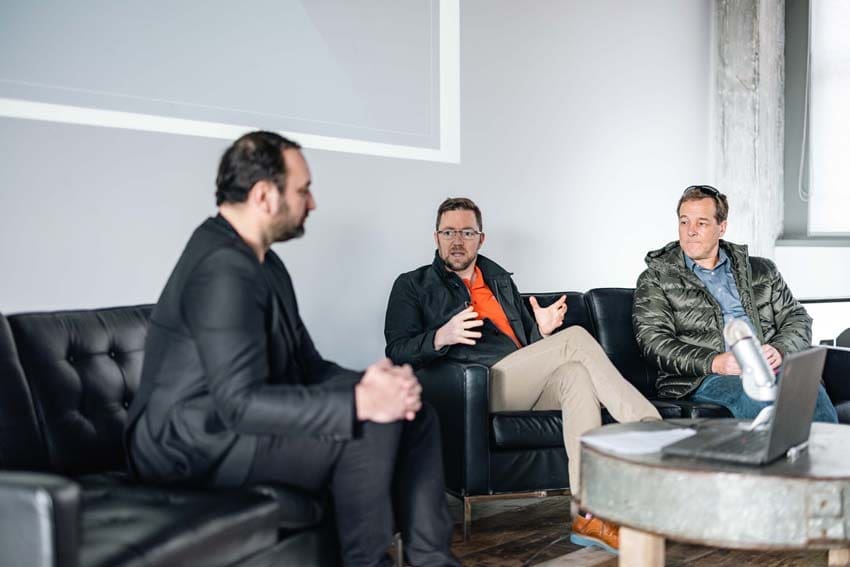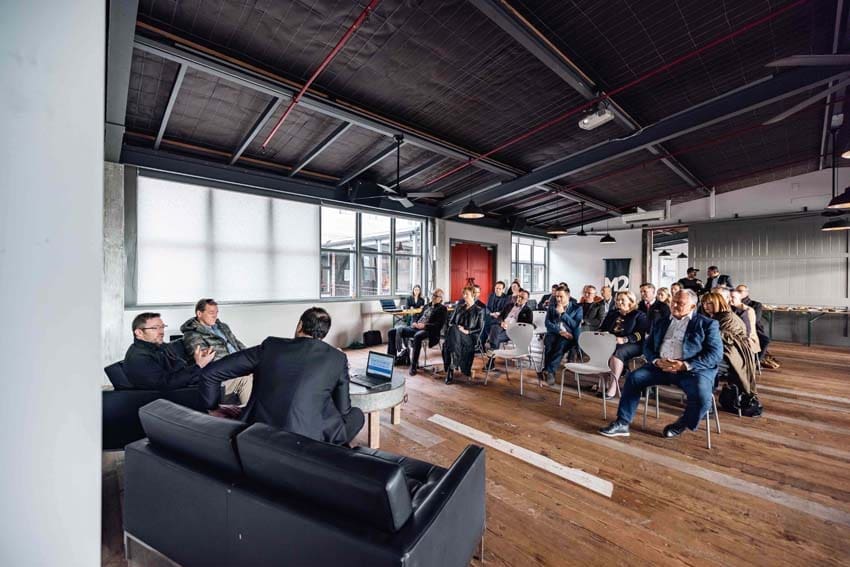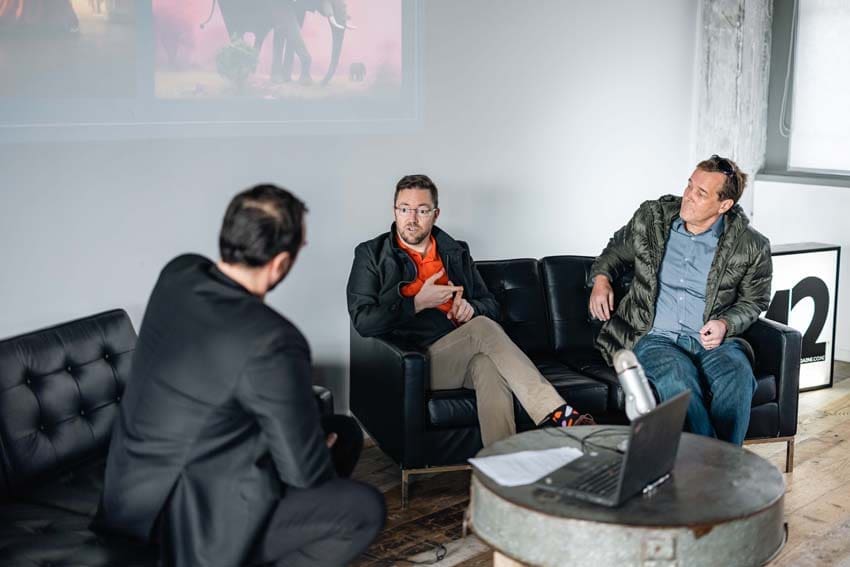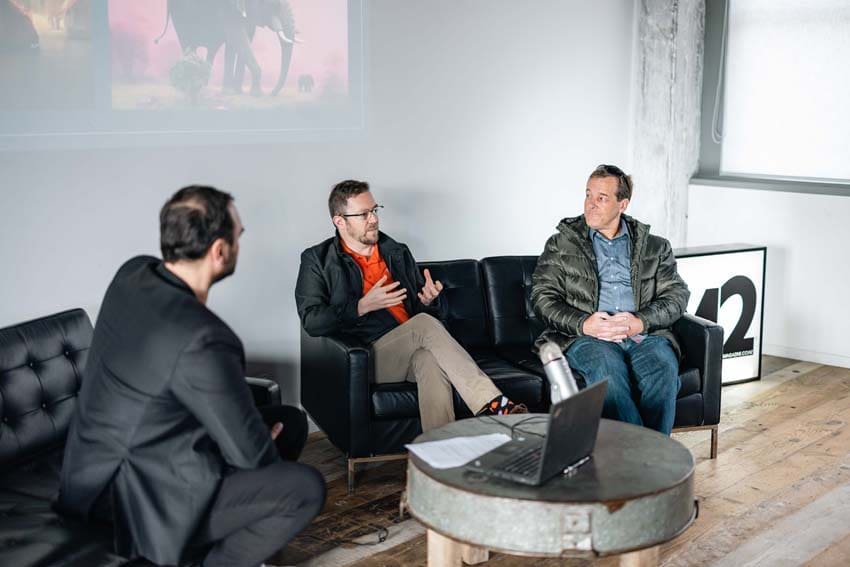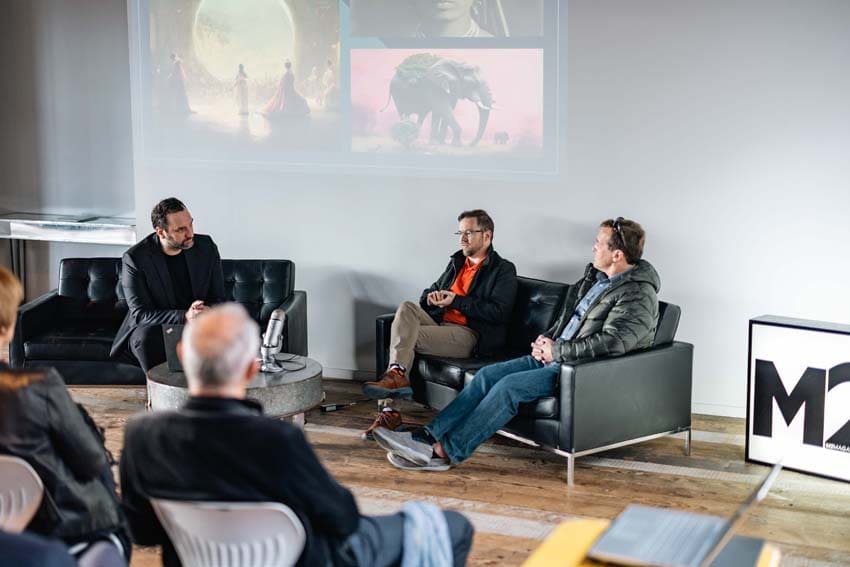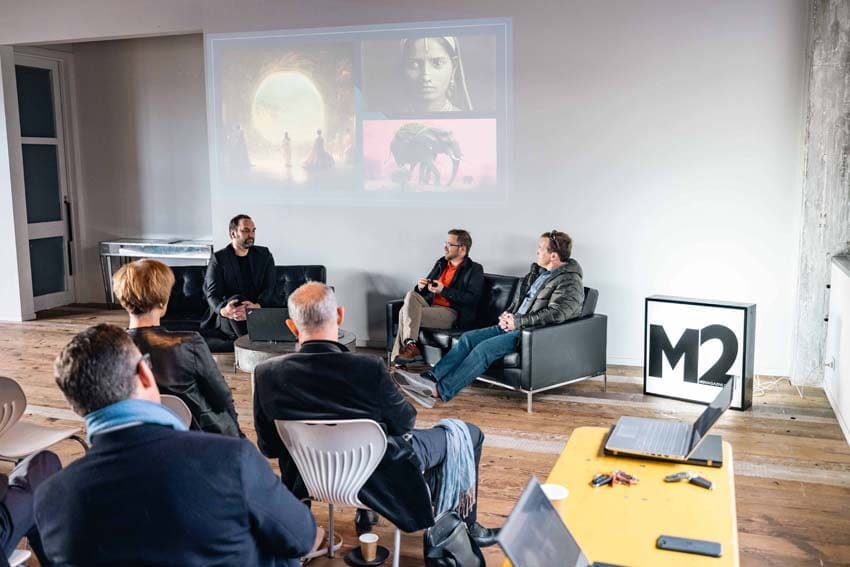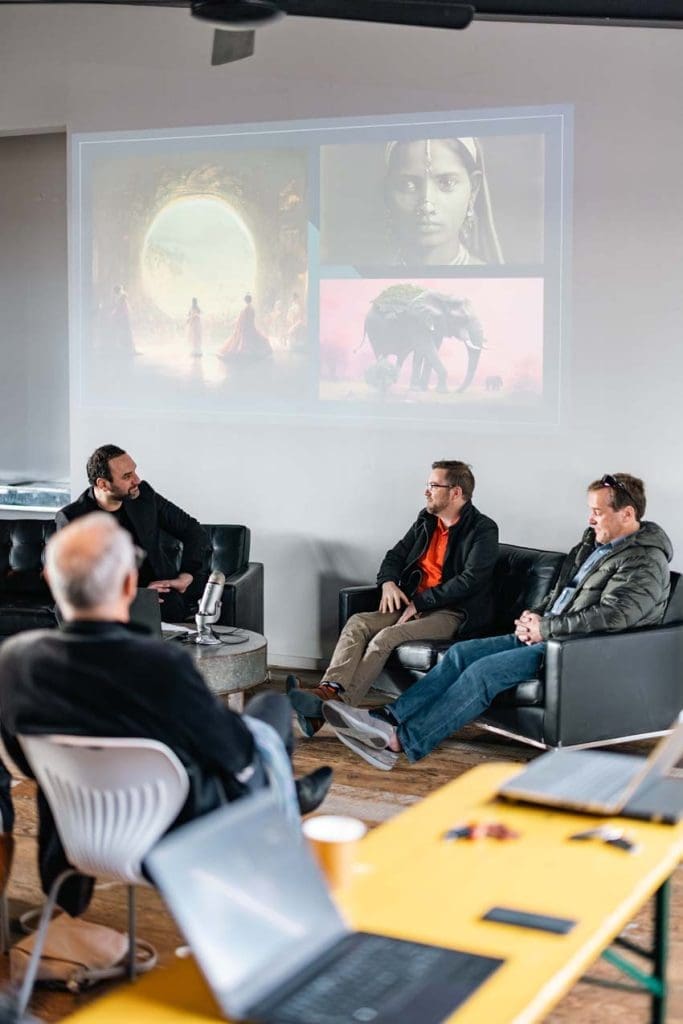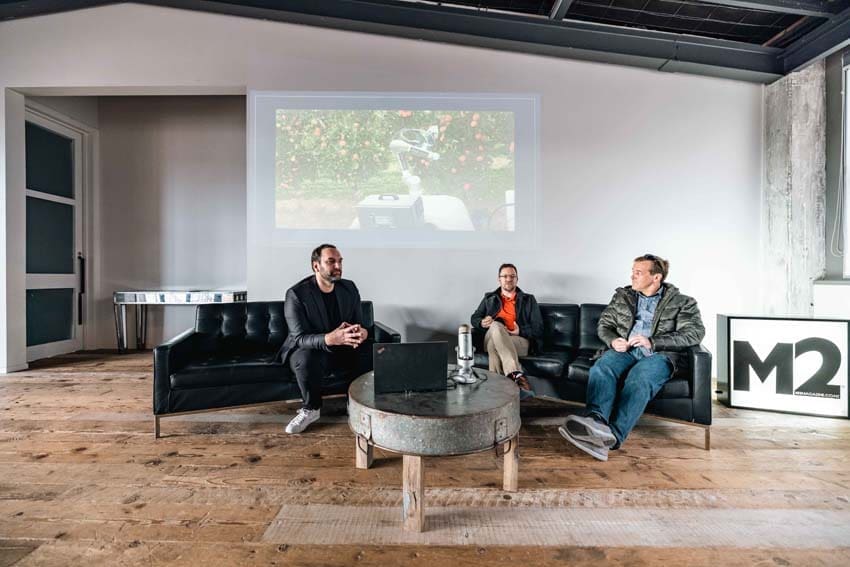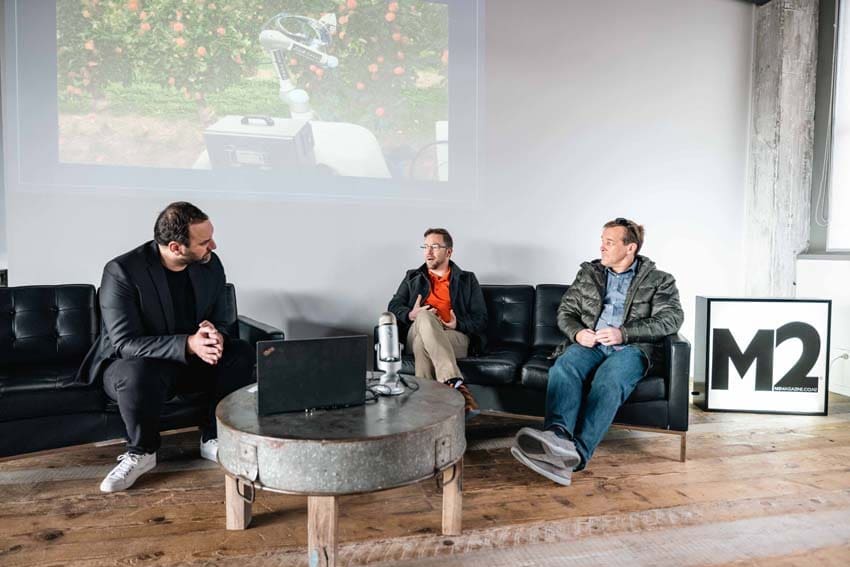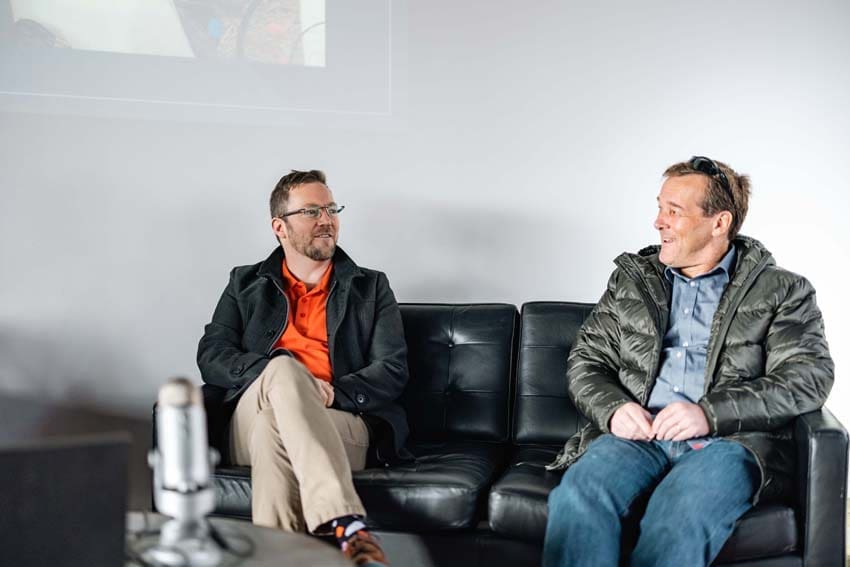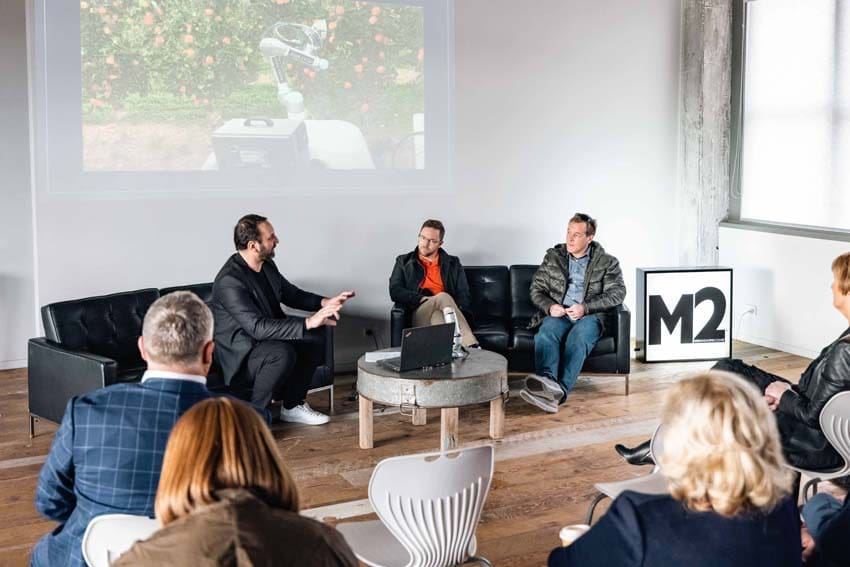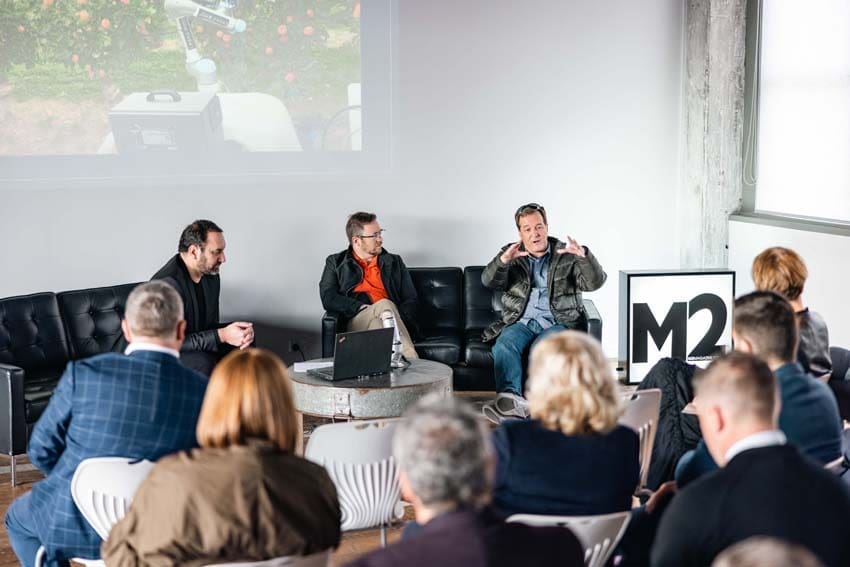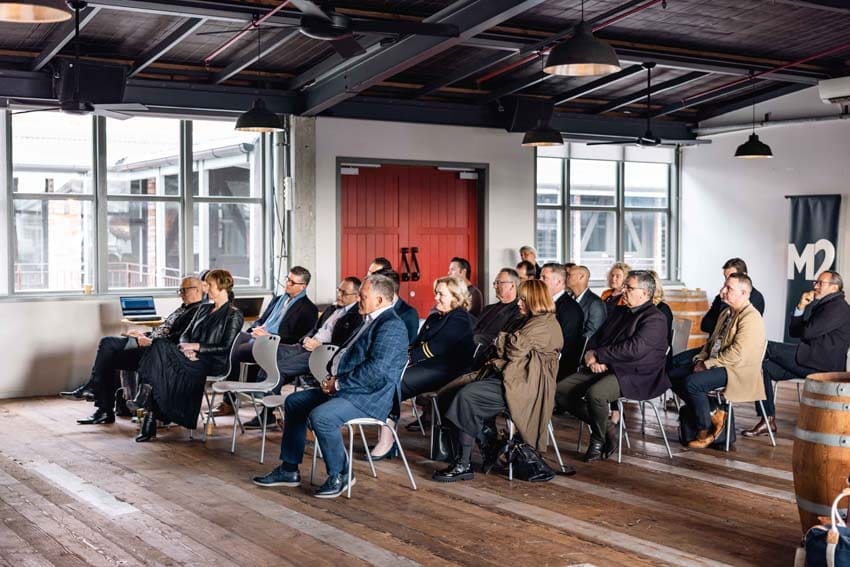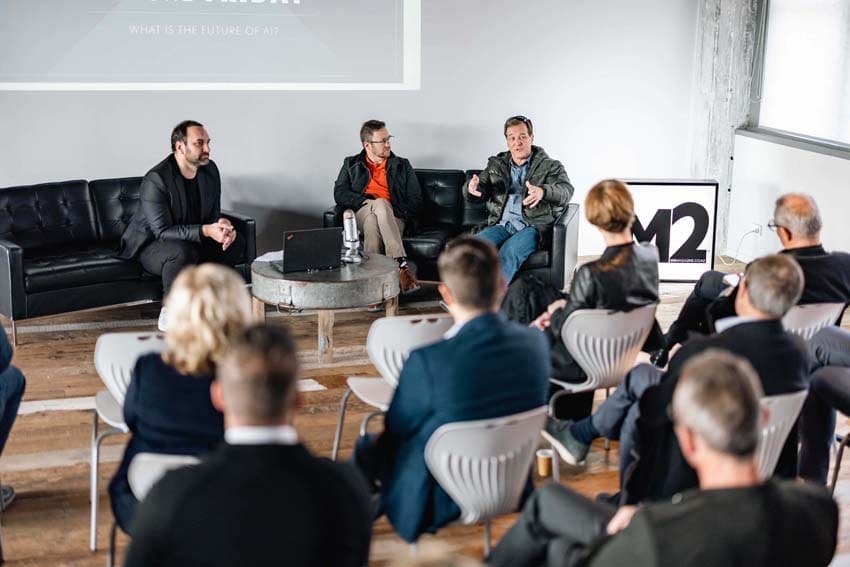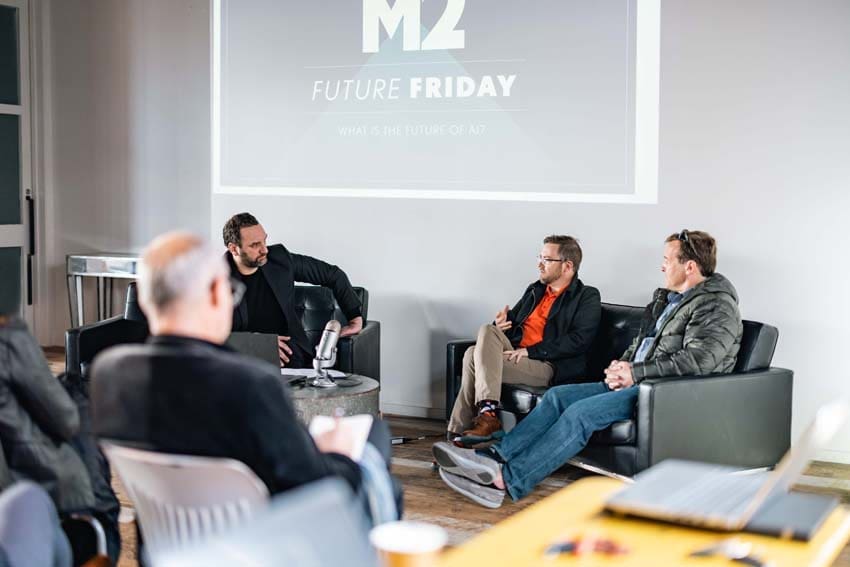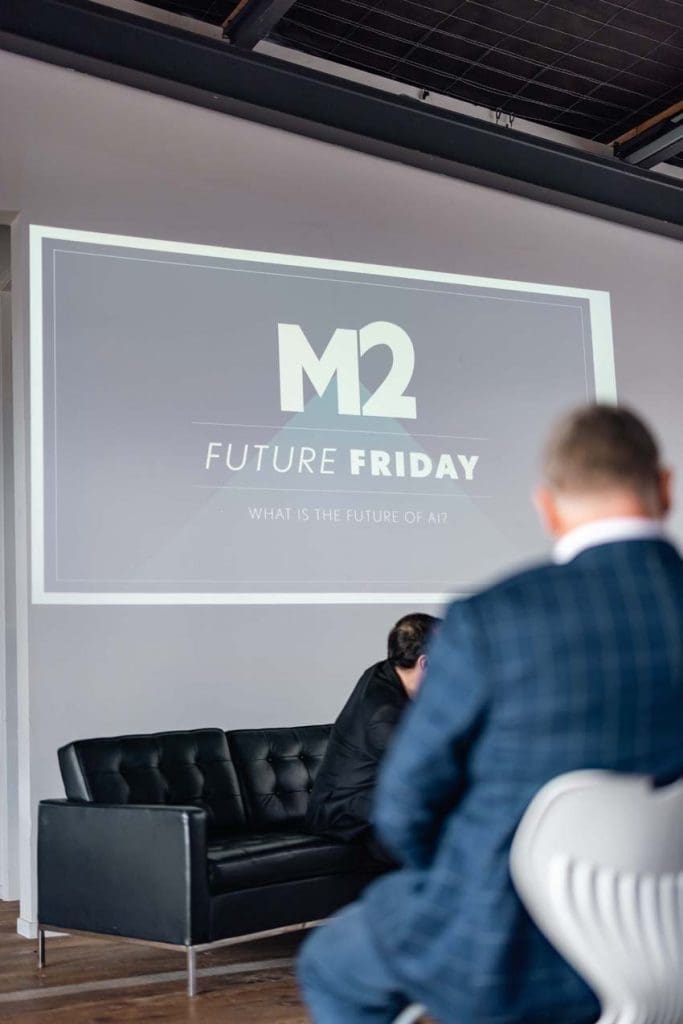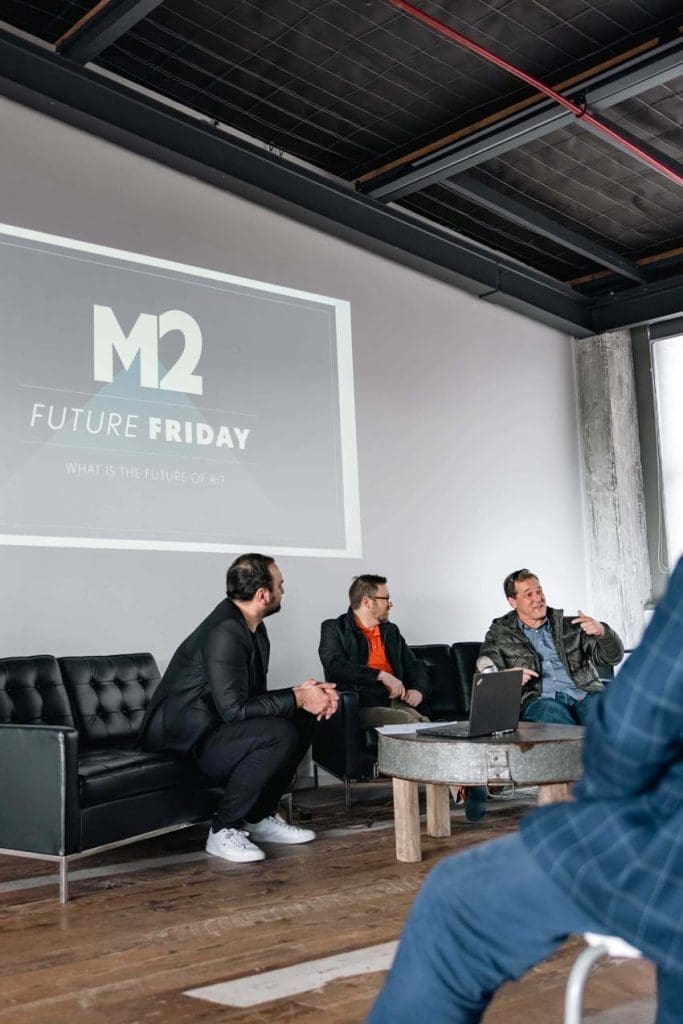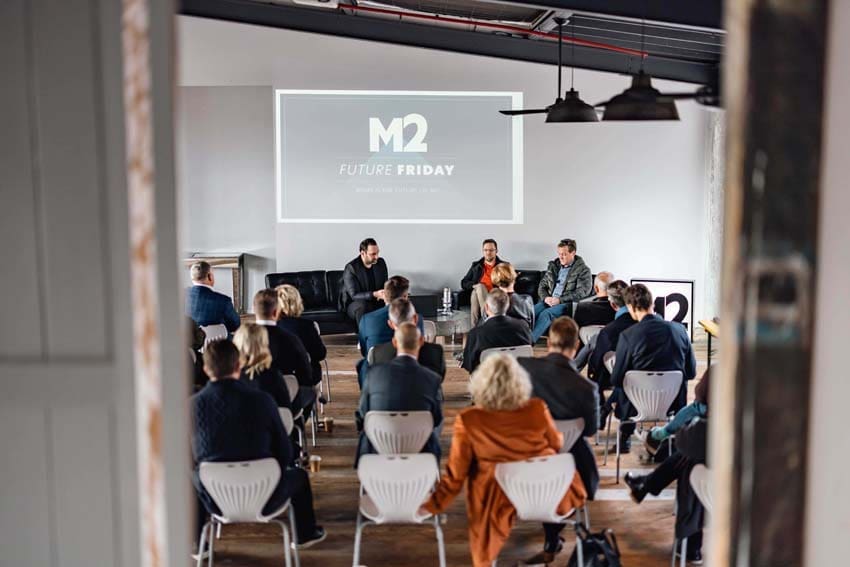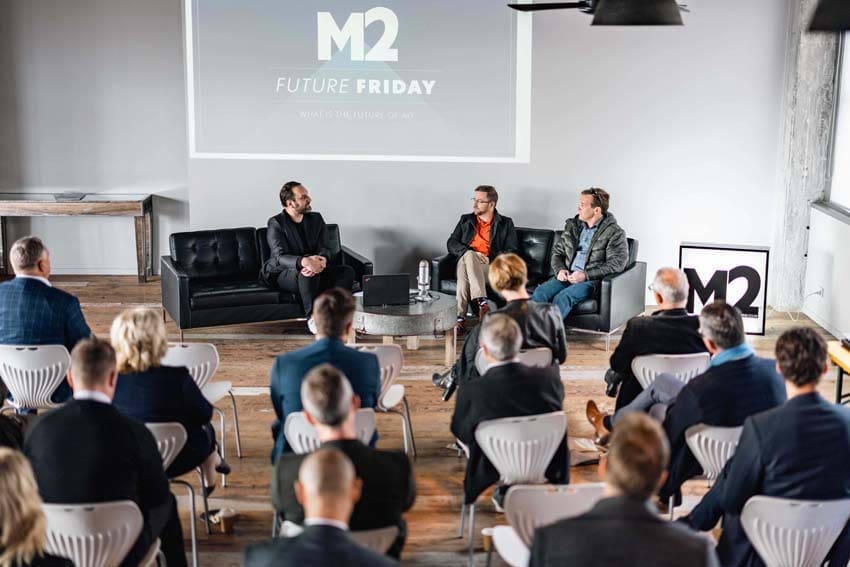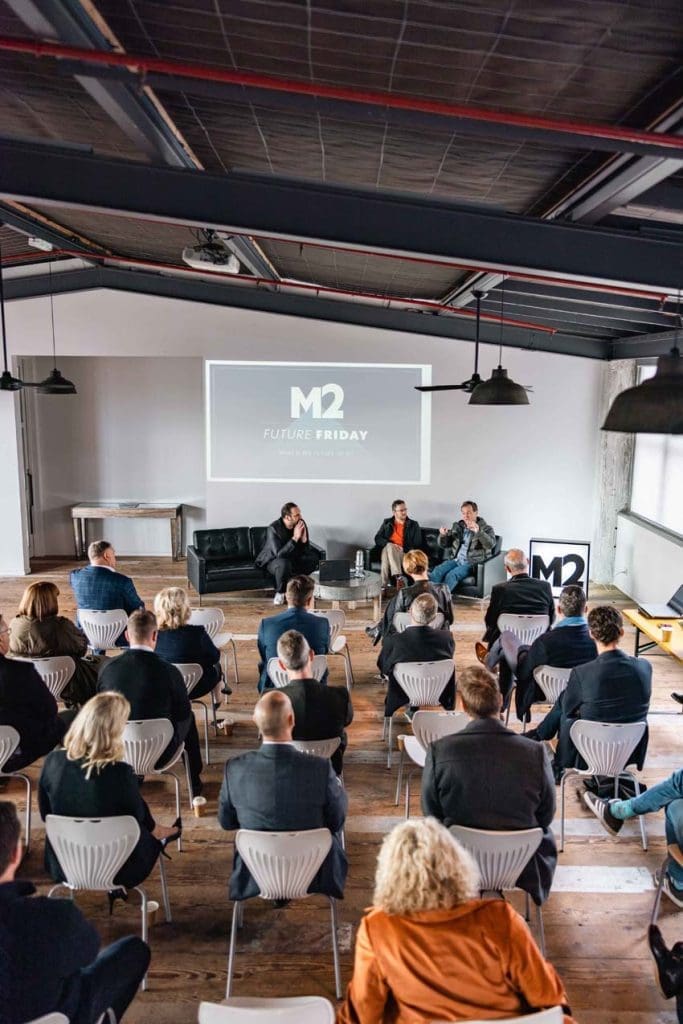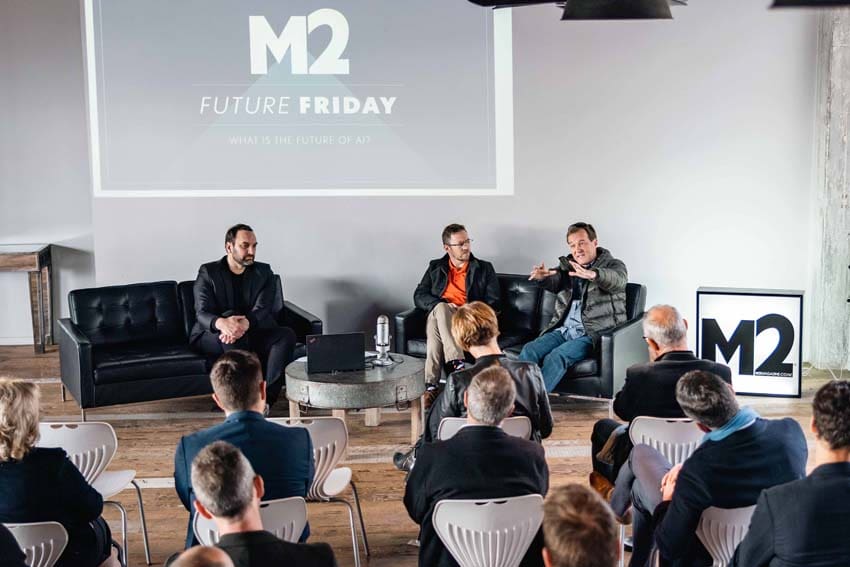The Future of AI & New Zealand Business
So often we focus on amazing leaps of innovation within different New Zealand industries. New ways of doing things or technology that propels a sector forward. But every now and then is an agnostic wave of potential which impacts everything and AI is an example of this. Even the lowest-tech industries are being disrupted and innovated by artificial intelligence.
And it’s not just enterprise, business and the economy, it’s also the social side of things as well. Like so many of the devices that we have connected to us and interact with every day are embedded with our ai. And we are feeding these data sets and we’re feeding these algorithms. And some people are really frightened about this. They imagine a future where we become flesh batteries for robotic overlords.
But then there are other people that are rubbing their hands together in glee as they imagine a future where we can cast off these manual tasks that we have to do day to day. We can kind of get back to human creativity, the stuff that we were destined to do, like poetry and TikTok videos.
And then the others who have this more pragmatic view of the relationship with AI as well, like it’s there to enhance our human problem-solving capability. And for us to be able to deal with some of the big hurdles that we need to face.
“There was a similar sense of disruption with Cloud. If you gave it to some CTOs, they might be like, ‘No, I love my big pieces of hardware with the blue flashing lights that are in the closet. I want to keep them’. As opposed to going off and looking at cloud technology.
If they’re doing the same thing with AI and they’re worried about being disrupted themselves, then they are going to resist, in which case you’ll lose. So get ahead of it and find someone who’s really creative and wants to break some things and try and disrupt your own business.”
– Tim Warren
So whatever pathway emerges, there’s no doubt that there are going to be some profound implications for New Zealand business and the short and medium term, and simply the long term. To help us navigate through this, we held a breakfast discussion on the 7th of October with some of the country’s top CEOs from a wide range of industries to hear from the people who have been responsible for creating the AI tools that are starting to shape the world.

Glen Anderson flew in from Silicon Valley where he has been instrumental in many of the hardware and software innovations over a number of years. Specifically, he also founded the Applied Machine Intelligence division at Google, which he ran for 11 years before helping to fund many AI startups as a Venture Capitalist for Monta Vista Capital and NZVC. Joining him is Tim Warren, who is the founder and the CEO of Ambit which is creating digital staff for companies to enhance their customer service capabilities, and get a new level of insights.
There is a lot of distrust and misinformation about AI in general and I probably didn’t help matters by starting off the panel discussion by asking Glen what year cyborgs are going to turn the earth into a smouldering hellscape.
But Glen was quick to point out there is there’s a tremendous amount of opportunity for all industries, to deploy machine-learned models to do lots of things.
“I think it’s funny the language you’ve already used here today, it sounds foreign to me. Coming from Silicon Valley, we don’t talk about the job loss, the job threat at all. It’s so funny, we’re still caught in our own little world of innovation. And so we see it all as
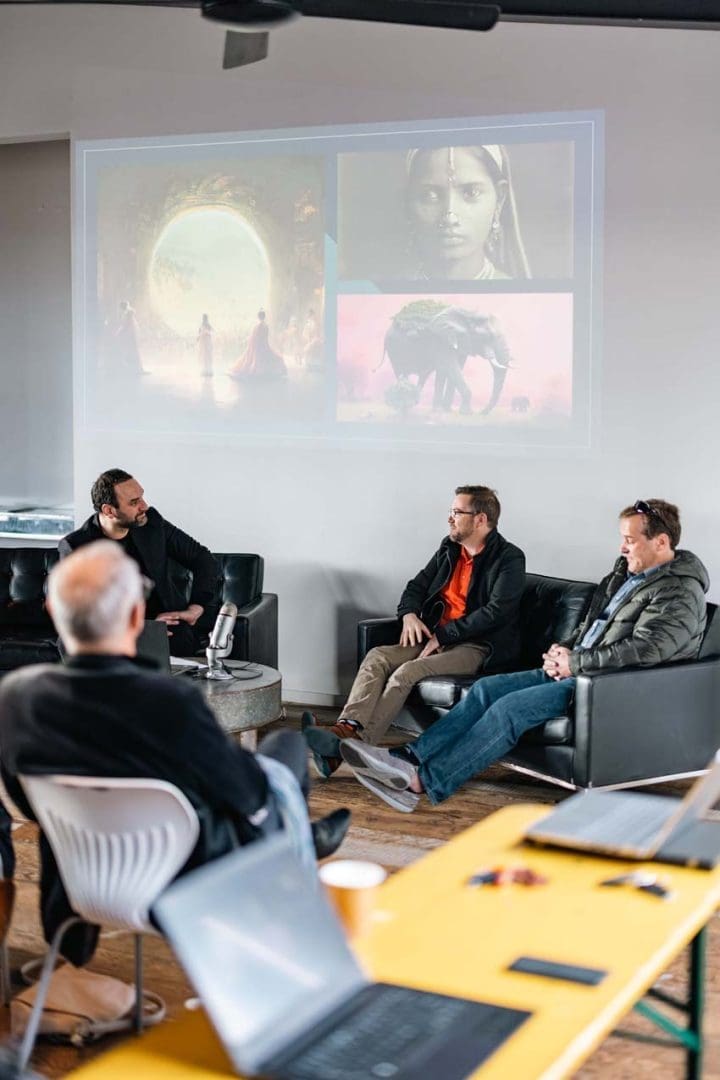
opportunity. They’re both true I think. It’s just the same thing but there’s a tremendous amount of opportunity for all industries to deploy machine-learned models to do lots of things. They can do conversational things, but there are also plenty of other meat and potatoes, machine learning applications where you can try to predict the behaviour of your users or your business partners or even your own employees. As a principal, I’ve avoided funding a lot of companies that try to observe and watch and predict people’s actions. But there are plenty of other things that are more benign that are quite useful to predict for your customers.”
And even though we seem to have cultivated a reputation for being early adopters here, Tim warns that we need to play catch up in terms of AI. He spoke about how in the US, it is becoming ubiquitous.
“Our team at Google built predictive models for a lot of the Google products. For instance, if you were going to use Google maps, you would go to the Eiffel Tower and it would predict what zoom level you would want. It would automatically zoom, instead of making people zoom in every time when they go to the Eiffel Tower. Or you might want to zoom out three levels every time you go to some other place, so we would predict that.
Or if you’re a woman from Sweden aged 35 years old, you’re going to like a certain style of jeans. Memorising each one of those predictions for each one of those different things is a parameter. And that’s just basically a number. All this is a number that gets learned with the data.”
– Glen Anderson
“It’s a normal everyday thing. ‘Oh yeah. We are using AI to predict the colours that people want in their designs.’ That’s the kind of functional stuff that is going to be automated. It’s fractional components of roles and it accelerates people. No one there is worried about job loss. Whether you are high-tech or low tech, you have to be aware of it and try and get ahead of it. If you’ve got everyone agreeing that you’re fine, then you’re not fine. You need that Yoda in the room who’s gonna say, ‘But, what if?’”
And that ‘what if?’ potential is really industry agnostic. With Glen describing Machine Learning as a being a piece of the world of tech enabling business to do things more efficiently, but also the term can be overused.
“At Monta Vista, we like to invest in companies that are transforming legacy industries. We have some investments in some very old fashioned stuff, like shipping container clearance, where people are still sending faxes, literally faxes around, which is like 1980s technology, and move it all to a multi-device, mobile, iPad, cloud-based everything.
“That has nothing to do with machine learning. Every pitch we hear pushes machine learning, but a lot of when you can’t cover it, they’re not even really doing much more than a simple predictive model, or they’re not even doing machine learning at all. The name machine learning maybe gets a little bit overused and can mean any kind of technology. So there’s quite a range of things you can do with the modern tools that are out there.

“One of the big revolutions that you can take advantage of is this whole no-code revolution. We have funded a bunch of no-code companies. It’s just a natural progression of moving up the stack. Humans used to code assembly language in the eighties, nineties. I don’t think anybody, even in the very deepest tech fields, codes assembly that I know of anymore. Everybody just kind of keeps moving up and the idea of having no code, having either the product generate code or you just don’t even need to do code at all, is something you can take advantage of because it lets you access all of these technology widgets.”
And while it is all becoming more accessible, one of the business leaders in the room asked what criterias to look at to ascertain if AI is right for you business. What are the questions to ask?
For Glen, the key criteria is that it has to be utility to you and number two is around data.
“We get a lot of people coming saying they want to do something. And it meets the utility requirement, but they just don’t have the data yet. It’s typically in medical, or the data are really confusing. Some models with doctor notes, oh my god, the doctor’s notes are so bad. We just couldn’t make sense of the data. That was a project Google Health did that we gave up on. Those are the top two, for sure. Third would be more, is the thing you’re trying to predict feasible?”
Glen warns that while a lot of this AI stuff sounds a little magic, the chances are that when you come to actually build your own model, his prediction will be you’ll find them way less magic.
“When you want to get something useful out of your model, you’ll be frustrated by how dumb it is. You’ll be like, ‘Come on, predict this thing. It’s like right there and it won’t do it’.”
Tim suggests this is down to the specificity of the task. When you don’t have the task in mind, we can sit down, we can show you things that’ll blow you away. When you’ve got a specific task, you will be like, ‘Oh, it’s a bit dumb’.

Glen suggests that there is actually a bit of a reality gap in what AI can currently do and what people expect it to be able to do.
“We would often coach teams at Google around this. A lot of it had to do with abstract 3D modelling. For instance, physical therapists wanted to use computer vision to look at a body and understand all kinds of things from just a quick scan. They had no training data. And we were like, ‘Wow. There’s almost no way to do that from starting from zero.’ You can do those things in the computer vision world eventually, but they take a lot of work. I would look for the low-hanging fruit. If you’re introducing ML into your business, look for some easy, straightforward predictions where it’d be useful to sense what the person is doing. Maybe it’s a customer support request. You want to think of data in terms of features. Features are the types of things, for example, like when a call comes in, you would want to look at the person: how many times did they phone previously? What product did they buy? Have they had any other problems with it? What did they spend with you? Who they are? Where do they live? Those are all things called features.
“You take those and then you try to see what from that can we predict that might be useful to show on a screen to give the human sales rep or customer support rep. And then you can move towards really advanced systems that are trying to handle that whole interaction themselves and then can kick the problem to a human when it gets out of its ability to handle it.”
Tim adds to this by suggesting that if you have high repetition and data, then you’ve got an area you can automate.
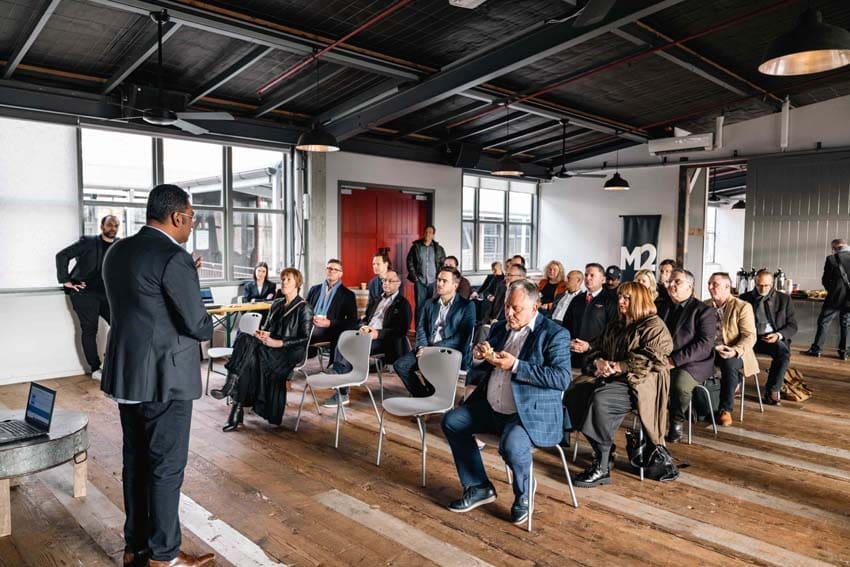
“If something’s happening only occasionally, that’s not the thing to look at automating. Don’t automate the long tail like the person that comes up with the really unusual request. Look at what’s happening regularly. With just about any business, I can predict what their top questions are going to be now. If you are running Vector, what’s your number one question you deal with at Vector? ‘When’s my power coming back on?’ With an online retailer; ‘When are my pants arriving?’ That’s what they ask. Now I know that because I’ve dealt with lots of these, because I’ve got data.
“Glasson’s is one of our customers and their number one question is, ‘when’s my order arriving?’ but their number three question is ‘can I model for you?’ Who would’ve known that? But when we looked at the data and we just pumped in a whole bunch of unstructured data, analyzed it, we saw that this is one of their questions. So we automated that.”
With all of this talk about offloading some manual processes to AI, I wonder also if we can learn a thing or two from AI in terms of how it organises itself. Is there something in there that can help to shape how we structure human organisation? And according to Tim, this is actually already starting to happen.
“We started our company with a set of values, which was to be real, be kind. We came up with that before certain politicians started using that phrase, in 2017. Be real, be kind, make it happen, and next level. The team started talking about how we should have something around having a collective team. So I started using our AI model to build additional value statements that we could use.
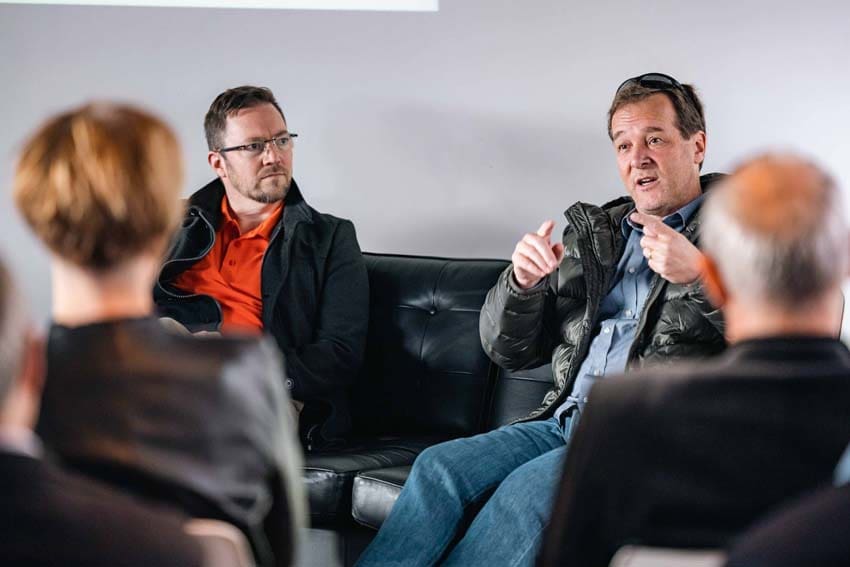
“So is it coming into a cultural and a personal perspective? Yeah, absolutely. I’m doing that right now. But I didn’t say come up with a couple, I said come up with a hundred. So I came up with a hundred options for extending our values based on these ones around one team. And now the people are doing the editorial work, which is trimming that down to a couple of summary examples.”
Glen also adds that AI can act as a bit of a mirror back to ourselves.
“Sometimes these big models give us insights into how some of the issues that human brain evolution had to deal with. One of them, for example, is called destructive forgetting. It’s actually really brilliant, the way the brain can still stay plastic but not forget things destructively.
“When you do this, when you recreate these kinds of situations in a model, it’s actually quite tricky to get them to learn new things without having them wipe out all things completely. You have to be clever about how you’re sustaining the memory when you are giving it continually new inputs. It has to remember what it learned two weeks ago when you trained it on a different thing. So that’s just one example, but I think those are more just insights that give us more of an appreciation for how complex our own brain is.”
And maybe that’s a really important thing to take away from a discussion about AI. No matter what the future holds for future industry by leveraging technology, we also shouldn’t take for granted the marvel of our own intelligence.




